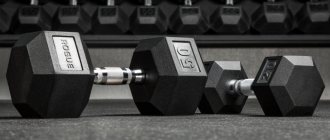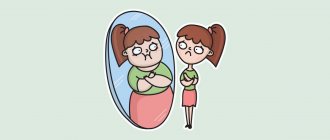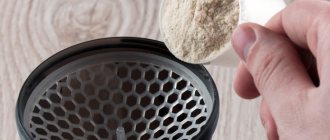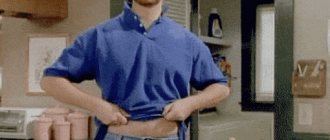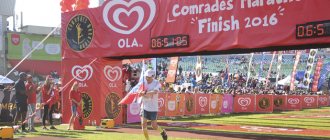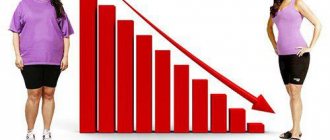How to get rid of muscle pain after training - many athletes face this problem. The question is especially relevant for beginners who are passionate about the idea of radically improving their body, but have not yet understood its capabilities. And having started to play sports intensively, without knowing laziness, they immediately began to perform quite complex sets of exercises.
24-48 hours after the first productive lesson, sore throat sets in, which can ruin not only a positive attitude, but also become an obstacle to the further program. It can be so strong that it prevents you from performing the usual simple actions - getting out of bed, going down the front steps or picking up a child.
If you have this condition, you must:
- make sure that these sensations are not a reaction to trauma and are truly harmless;
- take a warm bath or contrast shower, which will help quickly get rid of muscle pain after exercise
- continue to exercise as scheduled, but complete half of the plan, prefer aerobic exercises to strength exercises;
- you can skip a lesson if you feel a complete lack of strength and desire to do something;
- pain that lasts more than 5 days and the intensity does not decrease is grounds for a visit to the doctor.
Despite the fact that sometimes the discomfort can be very pronounced, SOMS (delayed onset muscle pain syndrome) goes away without any negative consequences.
Our additional services: Bioimpedance | Marutaka Massage | Pressotherapy | Ion-Detox
Causes of sore throat
Before giving advice on how and how to relieve muscle pain after physical activity, detailed information about this phenomenon should be given. Previously, scientists believed that lactic acid was to blame for pain - it reaches high concentrations in muscles during the breakdown of carbohydrates and the synthesis of adenosine triphosphate. Simply put, during intense physical activity. But later it was found that the level of lactate, along with other by-products of glycolysis, drops within a few hours - that is, even before the first unpleasant sensations appear.
SOMB occurs due to excessive swelling of muscle fibers and inflammation. The fact is that with unusual activity, micro-tears appear on the tissues - they are not dangerous in themselves. Nutrients and substances that promote regeneration, including prostaglandins and leukocytes, arrive to “repair” them. Their strong influx provokes swelling, which, together with inflammation, is the cause of pain.
Comment from Elena Morozova, a nutritionist at the weight loss clinic:
It should be understood that such a reaction of the body is quite natural if you had to experience an unusually large load. How can you avoid muscle pain after exercise without having to deal with intense burning and discomfort? Gradually increase the duration of classes and introduce new exercises with caution. The clinic’s specialists will help you create an individual program, following which you will not have to experience discomfort. A reasonable pace and correct technique mean high efficiency and pleasant fatigue.
Pain after training
Explanations for why arm muscles hurt after training should be sought in the peculiarities of the human body. The main cause of muscle soreness is the formation of lactic acid, which is formed as a result of the breakdown of glucose occurring in the tissues. Such chemical reactions begin to occur in tissues during intense training, when muscle fibers require additional energy to perform exercises and receive it by breaking down glucose.
As a result, during a set of exercises, a large amount of lactic acid accumulates in the muscles, which does not have time to be washed out. As a result of its impact on the fibers, a person begins to experience burning and pain.
In some cases, a person may experience trembling. Discomfort in the arm muscles may continue for several hours. Due to the anatomical features of the body, in order to quickly get rid of pain in the arm muscles, it is necessary to increase blood circulation immediately after training.
What to do if your arm muscles hurt after training:
- do sets of stretching exercises;
- take a shower with warm water;
- resort to massage;
- drink a couple of glasses of warm water.
After following the above recommendations, lactic acid will be eliminated faster and the pain will go away.
What should not be considered a safe sore throat?
Acute painful sensations that cause suffering and significantly limit motor functions should not be ignored by a specialist. The cause may be a sprain or injury. If you have a fever, dizziness or nausea, you should not continue exercising.
Once you decide to spend significant time in the gym, you need to learn not only how to relieve muscle pain after a workout, but in general be attentive to your body’s signals, distinguish between harmless soreness and serious symptoms, since it is easier to prevent SOMB than to remove it. Signs of discomfort cannot be ignored. Self-attention is one of the important components for achieving the desired results - slimness, endurance, attractiveness.
If you don’t find your own comfortable pace and optimal load, it’s difficult to maintain the desire to exercise for a long time. And without regularity, you can’t count on sustainable results. So learn to recognize your body's cues and find your own comfortable pace, avoiding over-exertion and exhaustion.
It is necessary to distinguish between the following types of sensations that are possible after completing a workout:
- A mild burning and buzzing sensation in the muscles immediately after exercise is evidence that the muscles have worked well. In this state there is no stiffness of movement, it can even be pleasant. Goes away after proper rest.
- Delayed muscle pain does not occur immediately, but on the second or even third day; its intensity can vary depending on the nature and intensity of the exercises performed. The greatest discomfort is associated with strength training, which required unusually high tension. Also, SOMB occurs with a high probability even in experienced athletes who perform a new complex with a predominance of eccentric loads (when the fibers are stretched) over concentric ones (contraction occurs).
- Acute painful sensations that appear suddenly and interfere with movements are most likely a sign of injury. It is not advisable to practice self-medication, as you can harm yourself by applying a hot compress instead of a cold one or vice versa.
Treatment of pain in the joints of the hands
Neither injuries nor joint diseases can be treated on your own. Injuries that are not treated correctly lead to inflammation of the joints, bleeding, damage to the joint capsule and nervous tissue of the hands. The diseases progress to an advanced stage, which threatens complete loss of mobility and disability.
Consult a doctor if you experience pain in your arm joints. The doctor will listen to complaints and refer you for an examination, which will help make a diagnosis and select the appropriate treatment. Depending on the diagnosis, different groups of medications are prescribed: anti-inflammatory and hormonal drugs, antibiotics, chondroprotectors. In addition to the medication, physiotherapeutic procedures and therapeutic exercises are prescribed. In advanced cases, joint replacement is performed.
What actions are most likely to cause sore throat?
It is worth highlighting the work in which the fibers lengthen - this happens when performing eccentric exercises. They contribute to the formation of a large number of microdamages to muscle tissue, after such sets you have to think about how to reduce muscle pain after training and alleviate the condition.
During the recovery process, intensive cell proliferation occurs in the injured area, which promotes muscle growth. Therefore, this type of physical activity is popular in powerlifting, weightlifting and similar sports.
Eccentric exercises (push-ups with a slow lowering of the body and rapid extension of the arms, squats with weights or on one leg and many others) remain in demand, as they bring many benefits in addition to increasing muscle size:
- develop flexibility;
- speed up metabolism;
- contribute to the development of strength.
Training focused on the eccentric phase is not recommended for people with joint diseases or those who have suffered an injury.
Preferring these types of physical activity, you need to take special care to prevent post-workout pain. Following the sequence will help: a long warm-up, then stretching, and then the main complex. The final exercises should be relaxation exercises (or cool down). The last stage is often neglected, but this is wrong. Its importance is as great as warming up, since it helps the body smoothly adjust from intense activity to calm functioning. During this period, the heart rate and breathing slow down, sweating decreases, and the skin cools. A cool-down may consist of slow stretching and leisurely walking.
Why do muscles hurt?
Krepatura is traditionally associated with the accumulation of lactic acid in muscle tissue. In this case, the acid, or rather its breakdown products, is eliminated from the body within a maximum of 72 hours. The causes of further pain are still not fully understood, but most researchers agree that the burning sensation can be caused by damaged cell membranes, which are formed as a result of micro-tears in muscle tissue and are gradually eliminated from the body. In any case, these processes are natural and not dangerous, and therefore in themselves cannot be an obstacle to training.
It should be remembered that muscle pain can also be caused by injuries - sprains or tears. And if an athlete’s pain threshold is high enough, he may not pay attention to this pain. If you see a bruise or swelling on the body, you must stop training, and if necessary, if the swelling does not subside and the pain does not go away for a long time, consult a doctor.
How to relieve muscle pain after exercise
If you couldn't prevent SOMB, don't worry. There are ways to help you get through an unpleasant period easier:
- warm bath – relaxes the body, improves blood circulation, which helps accelerate regeneration;
- cold compress – fights inflammation;
- contrast shower - combines the positive effects of the previous two methods;
- massage – improves microcirculation, relieves excess tone, which accelerates cellular metabolism, which means microtraumas heal faster;
- warm-up - leisurely light exercises improve the condition, as they have a beneficial effect on chemical processes in cells;
- swimming - allows you to move as painlessly as possible, this method is especially good when the whole body hurts and it is difficult to apply ice or massage;
- medicinal ointments with an ingredient that stops inflammation and a slight warming effect;
- anti-inflammatory painkillers, such as ibuprofen or aspirin, help to survive an unpleasant condition with comfort, but slow down tissue repair because they interfere with the normal production of prostaglandins.
Nutritionist's comment:
Self-massage should not be too intense, as excessive exposure can lead to increased swelling and worsening of the situation. Therefore, it is better to use the services of a specialist.
How to Reduce Post-Workout Muscle Soreness with Food
The first thing the body needs to get in abundance in order to successfully cope with recovery from tiring work is water. During a fitness set, you should not deny yourself fluids.
To help your body successfully adapt to increasing loads, include it in your diet.
- Cherries and freshly squeezed juice - contain antioxidants (anthocyanins), which successfully fight inflammation, promote regeneration and reduce discomfort.
- Vegetables and leafy greens - a vitamin complex obtained from fresh foods that has a beneficial effect on the body and damaged tissues. Particular attention should be paid to cruciferous vegetables - radish, cauliflower, broccoli, kohlrabi - they reduce cortisol levels, fight free radicals, and have a positive effect on the functioning of the thyroid gland.
- Fish with a significant content of omega-3 polyunsaturated fatty acids are herring, salmon, and halibut. Optimizes regeneration, allowing you to return to normal in a short time.
- Foods with a high glycemic index - watermelon, persimmon, dates - restore the supply of muscle glycogen, which serves as a source of energy for productive physical activity.
- Eggs are a product that contains a lot of protein and, in particular, leucine (an amino acid that promotes muscle growth).
With proper balanced nutrition, the body will receive all the necessary nutrients for a speedy recovery and energy to continue the sports program.
What to take care of so you don't have to ask yourself how to relieve muscle pain after a workout
It is important to start with a leisurely warm-up, gradually preparing and warming up the muscles. This measure will allow the body to adapt well to subsequent exercises, work productively, and also get maximum pleasure from physical activity.
When starting a fitness program, you should exercise restraint. Do not try to perform the complex of an experienced athlete in the first lesson - this will not bring you closer to the desired result. The best solution is to do 10% of the optimal load of the selected program. Next time add the same amount. Increase the intensity systematically, even if it seems suspiciously easy to do the exercises at a reduced volume. This approach will save you from having to think about how and how to relieve muscle pain after training.
After completion, drink water without restrictions; a contrast shower is also recommended. These simple measures will help maintain a high rate of metabolic processes and blood microcirculation in tissues.
After completing a fitness set, you need to eat; foods rich in proteins and vitamins A, C, E will be especially useful. The best solution would be to create a special post-workout diet.
Nutritionist advice:
Dehydration significantly slows down recovery in the body and can cause body soreness even in experienced athletes. Therefore, the drinking regime must be taken seriously.
What is the reason for the pain after a day?
For untrained athletes, the feeling of severe pain in the arm muscles after training can last a long time and the recovery process can take several days, while the pain can be very disturbing and every movement can be difficult. Such pain is of a different nature and in the sports environment is called delayed. In this case, the muscles ache for an average of 1 to 3 days.
The reason for such sensations is the appearance of microtraumas of muscle fibers, which appear in a person after performing exercises with a serious load. In the process of their stretching and contraction, tiny microscopic tears are formed; they do not cause pain immediately after training. After 24 hours, such places begin to become inflamed and painful.
If the muscles hurt and the sensations are associated with delayed symptoms, then such pain should not be a source of anxiety and worry, it is a natural reaction of the body to overexertion. The body perceives stress from physical activity and the ongoing redox processes as a reason for a response, so the muscles hurt.
It’s impossible to play sports without sore throat – that’s a myth
The idea that pain is an integral part of an athlete's life has now been refuted. Previously, it was believed that soreness was the only sure sign of productivity. In fact, with regular exercise and technical performance of the exercises, painful sensations should not occur. After a good workout, there is usually pleasant fatigue and a slight buzz.
If you constantly exercise according to the same program, but often experience aching pain, then you should revise the plan downward.
Specialists working at the Slavic Clinic will help you adjust the course taking into account the individual characteristics of your body, age and desired results. By following the recommendations of professionals, you will lose weight comfortably - watch how your volume disappears, muscle relief appears, flexibility increases - without having to endure unpleasant sensations. Look at our Clients' Acknowledgments and Success Stories - View


